Going Beyond 2 Dimensions
Hopefully by now, you’ve had a chance to create a design or two with Subdivisio.
The designs that you’ve been creating thus far have been 2-dimensional. They subdivide a square, which has a height and width.
But...with a little imagination we can start to think of these as 3-dimensional designs.
Let's see how.
Introducing time as a dimension
We might describe a subdivisio design as 2-dimensional because we can locate any specific position (or pixel) in a design by identifying an x-coordiante and a y-coordinate. This is what it means to be 2-dimensional, we need two pieces of information to specify any position in an object.
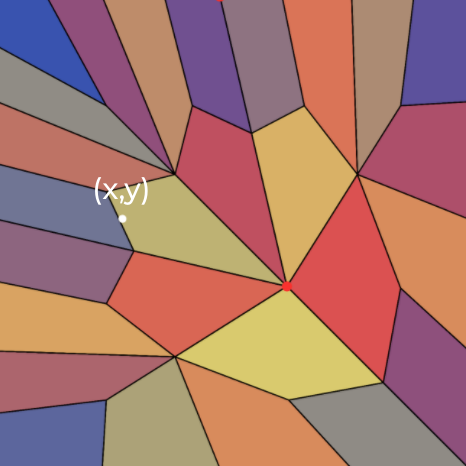
However, this assumes that our subdivisio design is just the final image that we download or save to the gallery. This is not the only (or perhaps even the best) way to think about what a subdivisio design is. We could just as easily decide that 'a design' is not the finished product but the process itself.
Subdivisio is interactive and uses draggable points. A design session unfolds over time. It is a process of changing colors and settings as you drag the red points to and fro, adjusting them to just the right position for an interesting geometric arrangement.
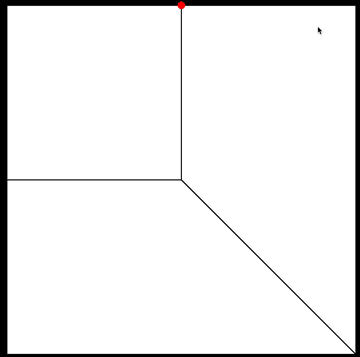
With this broader definition of a subdivisio design, we now need three pieces of information to specify a particular position in our design: an x-coordinate, a y-coordinate and a number that tracks how much time has elapsed since the beginning of the design process.
If our goal was simply to depict this 3-dimensional way of characterizing a design, the animated image above seems to accomplish that nicely. But let's try something a little more interesting.
Translating time into space
What happens if we take our 3rd coordinate, the time dimension, and turn it into a spatial dimension?
This removes the time dimension and allows us to view the entirety of a design as an object in 3-dimensional space at a single moment in time. This is kind of a strange idea but one that has been explored by other thinkers and artists (check out the 'Explore More' tab for some links to see other examples).
Applying this idea to create 3D objects
We can use this idea to create simple 3D objects based on the subdivisio process.
For the example we will look at, we are going to ignore the color aspect of the design and focus on a slightly different subdivision rule than the one used in the creation tool on this website.
The subdivision rule we will use divides a square into 4 smaller cells (rather than 3) by constructing one draggable point on an edge and 3 corresponding points on each of the other 3 edges. Then the constructed points on opposite sides are connected to divide the square into 4 cells.
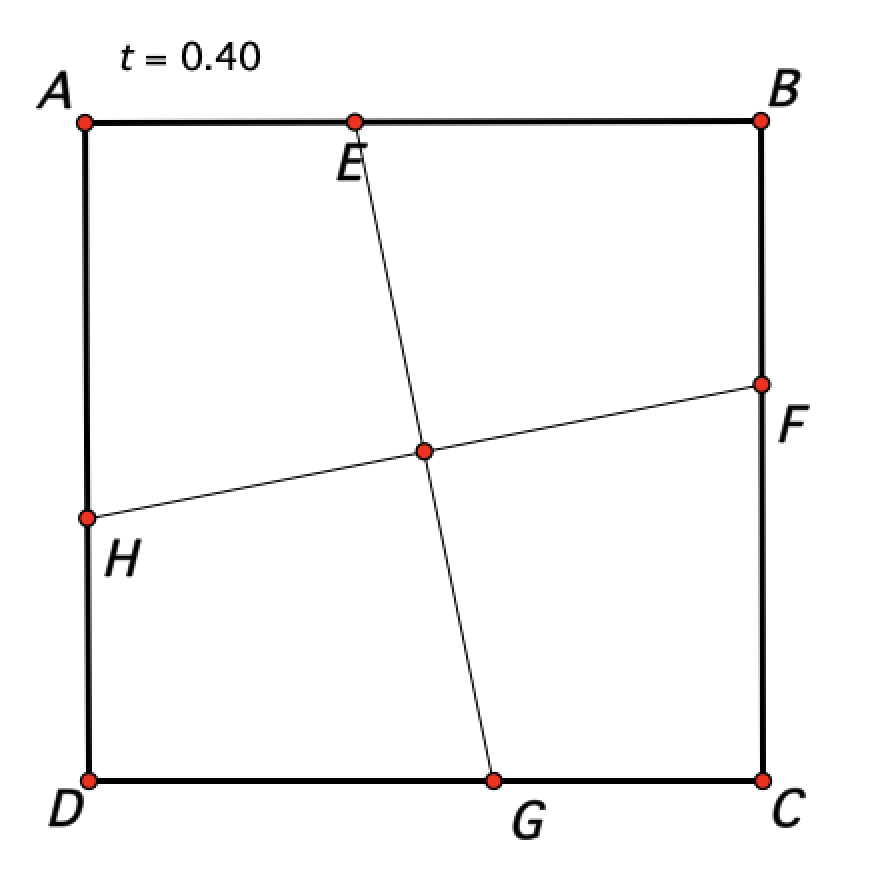
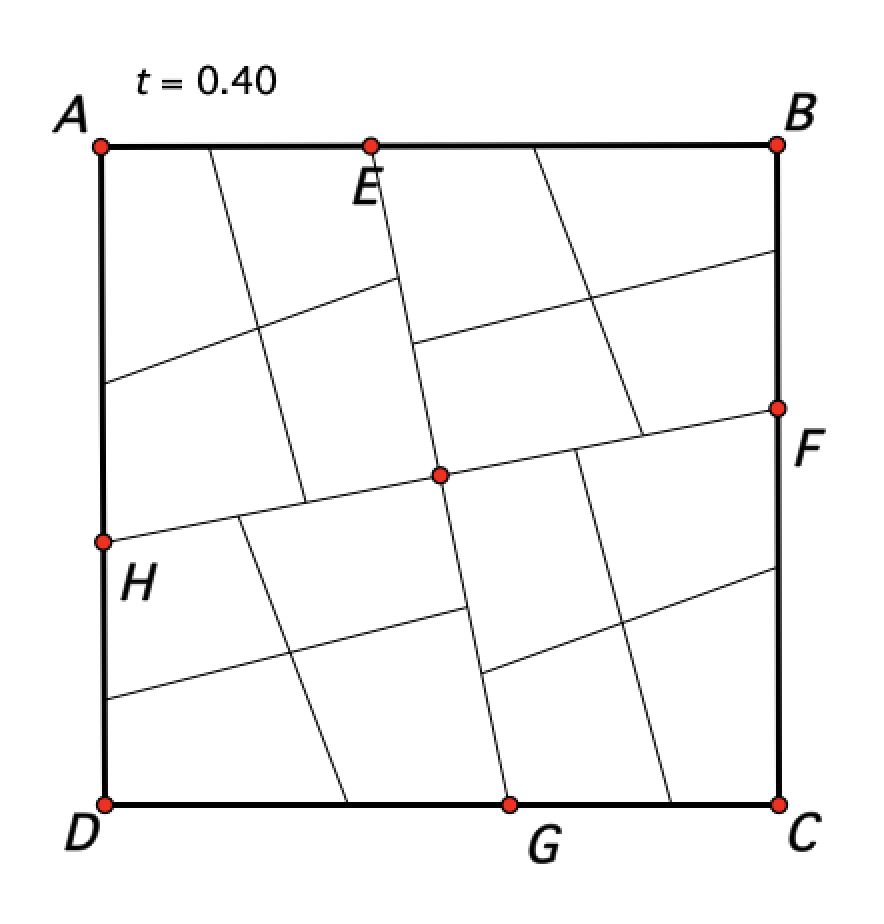
As with any subdivisio process, we need to specify a subdivision mapping as well but we won't go into the details of the one we chose here.
Imagine that we sit down and start our design with the draggable point at the midpoint of the line segment (t = 0.5). Then we drag that point to where t = 0.8. We have had a very simple subdivisio design experience going directly from our starting configuration to our final design. What would this look like as a 3D object?
One way to visualize this would be to slowly move upward in space (in the z-direction) as we drag the point. The result would be a series of cross sections that would combine to sweep out distinct 3D pieces.
Here is a visualization of the sweeping process:
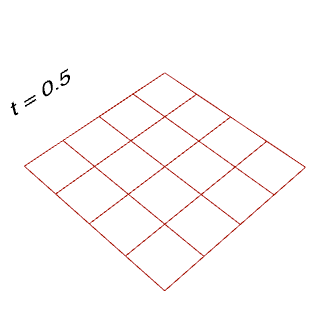
And several different views of objects produced:
A view of the design on the top of the box
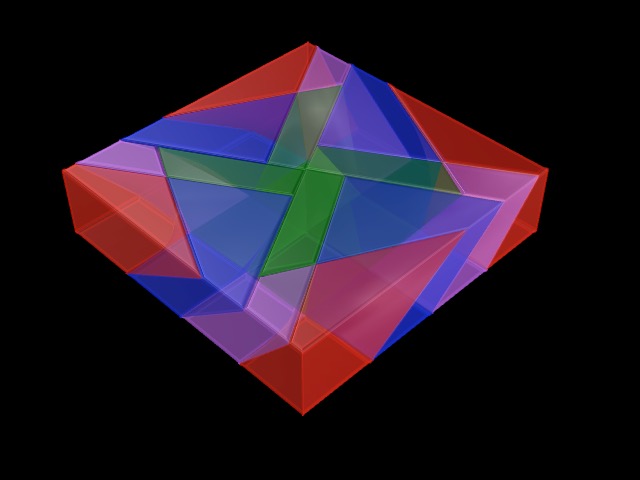
A view of the design on the bottom of the box

An exploded view of pieces
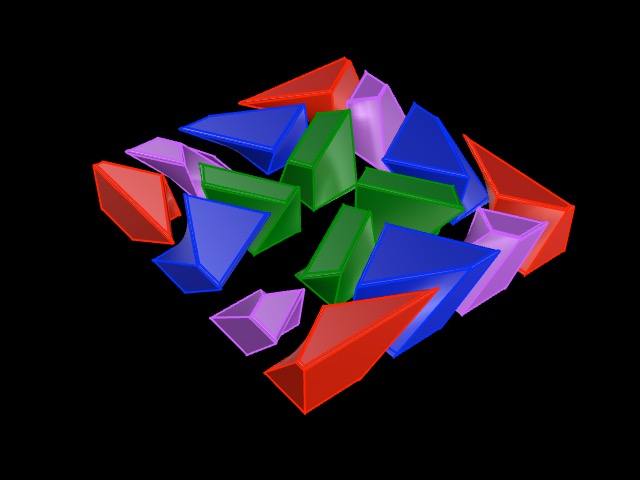
To summarize, we have created a 3-dimensional object that represents the transition from one subdivisio design to the next. And because the transition happened in a smooth way as we dragged the red point, we have created a collection of objects that can be broken apart and reassembled into a cuboid.
What do you think these shapes might look like for your most recent subdivisio design?
How else might we turn the time dimension of the subdivisio process into a spatial dimension that could be used to create a sculpture?